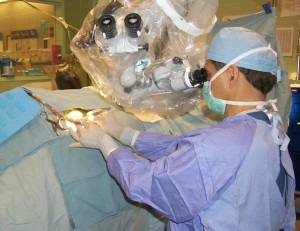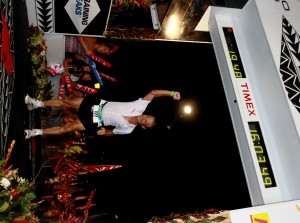Conservative Treatments for Spine Pain
 Summary:
Summary:- Not everyone with back or neck spine pain needs surgery
- Most people can reduce pain with exercise and therapies for pain relief
 A persistent ache in the lower back with occasional shooting pains down the legs and muscles so tight you can’t even stand up straight are some of the most common complaints I hear on a daily basis. But despite being trained as a neurosurgeon I rarely have to operate on most people with these complaints. Despite the fact that 65 million more Americans annually suffer from low back pain every year most DO NOT require surgery.
A persistent ache in the lower back with occasional shooting pains down the legs and muscles so tight you can’t even stand up straight are some of the most common complaints I hear on a daily basis. But despite being trained as a neurosurgeon I rarely have to operate on most people with these complaints. Despite the fact that 65 million more Americans annually suffer from low back pain every year most DO NOT require surgery.
Approximately, 75 to 85 percent of all people will experience some form of back pain during their lifetime. Back pain is the second most frequently reported reason a doctor visit, the fifth most frequent cause of hospitalization and the third most frequent reason for surgery. Neurosurgeons, however, rarely operate on back or neck pain before a series of very specific steps are followed to ensure that if surgery is needed the outcome will be successful.
Step I – Duration of Symptoms – Quite often pain in the back or neck will occur quickly and then resolve just as fast. It is important to allow the natural course of this phenomenon to play out before rushing to surgery. Since most spine pain events involve some form of precipitating physical trauma, muscles, ligaments and tendons are the usual pain generators for back and neck pain. Chronic recurring pain may be more associated with arthritic changes of the many joints that make up the spine including collapse of the intervertebral discs. In this case symptoms tend to come and go over time but tend to be somewhat worse with each reoccurrence and last longer.
Step II – Diagnostic Tests – If the pain persists and then beings to involve an arm or a leg then testing is often required. There are other “Red Flags” the may require rapid testing and even emergent surgery. Fortunately these are reality rare. The MRI scanner has become the test of choice for most neurosurgeons because of their greater clarity to show soft tissues (tissues that are not bone), such as nerves, ligaments, tendons, and disc spaces. There are numerous other tests that can also be ordered as well. Others include nerve conduction tests known as EMG/NCT, myelogram followed by a CT, and invasive tests which can also help to relieve pain called selective nerve root blocks or SNR block.
Step III – Conservative Therapies – If surgery is determined not to be required acutely or at all you most often will be asked to start some form of treatment collectively known as conservative therapy.
Conservative treatments, such as, medications, bedrest or more often exercise, heat, manipulations, message, ultrasonic therapy and physical therapy can be used to help back/spine pain in the acute phase. Lifestyle changes, such as, weight loss, exercise, and good body mechanics can result in long term relief.
Pain therapy can also be used if conservative treatments are less than effective. Subspecialty Pain clinics offer a full scope of treatments for persistent (non-surgery) pain. These clinics have experts in biofeedback, steroid injection, and other non-surgical treatments. Occasional external and/or implantable spinal stimulators are used to override the pain impulses. And pumps can be implanted to give mini-doses of pain medication to relieve the pain
It is important to remember that if the spine pain persists and symptoms begin to radiate into the legs or arms then this may indicate a nerve being irritated or sometimes referred to as “pinched nerve”. This condition may also be relieved with conservative treatments but if the symptoms persist and are associated with signs such as weakness, walking problems numbness/tingling or difficulty with bladder or bowel function then re-evaluation of the spine is required.
Back Exercises
The lumbar stabilization exercise program includes a range of exercises that typically progress from beginning to more advanced:
*From static (lying) to dynamic (standing or jumping)
*From resisting gravity to resisting additional outside force
*From predictable to unpredictable movements
*From individual components of a movement to the complete range of motion in a movement
At all times the neutral spine position is maintained. Progression to the next exercise generally depends on learning to maintain the neutral spine properly during the current exercise. The physical therapist or exercise therapist is trained to help the patient learn the proper technique.
The exercises below are a small subset of those a therapist may recommend. The spine specialist and therapist design each lumbar stabilization exercise program specifically for each patient based on the patient’s condition.
Examples of exercises include:
 Hamstring Stretch—A passive exercise using little muscle effort. Lay on the floor with knees bent and feet on the floor. Find the neutral spine position and maintain it while slowly straightening one leg and lifting the heel toward the ceiling while supporting the back of the thigh with both hands (Figure 1). Hold for 10 to 30 seconds and repeat with other leg. Do 3 repetitions. Can make the leg muscles static too by using a wall to straighten the leg while resting the leg muscles.
Hamstring Stretch—A passive exercise using little muscle effort. Lay on the floor with knees bent and feet on the floor. Find the neutral spine position and maintain it while slowly straightening one leg and lifting the heel toward the ceiling while supporting the back of the thigh with both hands (Figure 1). Hold for 10 to 30 seconds and repeat with other leg. Do 3 repetitions. Can make the leg muscles static too by using a wall to straighten the leg while resting the leg muscles.
![]() Pelvic Tilt—An active exercise from one position, where the abdominal muscles are isolated and used to move the spine. Lay on the floor with knees bent and feet flat on the floor. Tighten stomach muscle and pull the lower back to the floor (Figure 2). Hold for 10 seconds. Do 3 to 5 repetitions.
Pelvic Tilt—An active exercise from one position, where the abdominal muscles are isolated and used to move the spine. Lay on the floor with knees bent and feet flat on the floor. Tighten stomach muscle and pull the lower back to the floor (Figure 2). Hold for 10 seconds. Do 3 to 5 repetitions.
![]() Arm/Leg Raises—A more dynamic exercise introduces movement of the arms and/or legs to challenge the neutral spine; this exercise is for the hip abductors. Lie on one side with lower arm bent under head and upper arm resting with hand on floor near chest. Bend both knees and flex hips and find neutral spine position. Slowly raise upper leg 8 to 10 inches and lower. Do 5 to 10 repetitions and repeat on opposite side (Figure 3).
Arm/Leg Raises—A more dynamic exercise introduces movement of the arms and/or legs to challenge the neutral spine; this exercise is for the hip abductors. Lie on one side with lower arm bent under head and upper arm resting with hand on floor near chest. Bend both knees and flex hips and find neutral spine position. Slowly raise upper leg 8 to 10 inches and lower. Do 5 to 10 repetitions and repeat on opposite side (Figure 3).
![]() Exercise Ball Bridges—An advanced stabilization exercise that introduces unpredictable movement that must be responded to (the movement of the ball). Lay on floor with both feet propped up on the exercise ball with legs straight and arms relaxed to the sides. Find the neutral spine position and hold while slowly tightening the buttock muscle to lift the buttocks off the floor 2-3 inches (Figure 4).
Exercise Ball Bridges—An advanced stabilization exercise that introduces unpredictable movement that must be responded to (the movement of the ball). Lay on floor with both feet propped up on the exercise ball with legs straight and arms relaxed to the sides. Find the neutral spine position and hold while slowly tightening the buttock muscle to lift the buttocks off the floor 2-3 inches (Figure 4).
In addition strengthening exercises, such as those above, stretching and aerobic conditioning are also an important part of lumbar stabilization physical therapy:
- Flexibility is key to successful lumbar stabilization training, because flexibility allows the muscles to assume the neutral position easily.
- Cardiovascular (aerobic) conditioning is an important part of the total body muscle strength and endurance and should be combined with the lumbar spine stabilization program. Maintaining a neutral spine during aerobic exercise is for the more advanced patient and protects the healing back while working out.
Stabilization exercises can be rather rigorous and therefore may not be well tolerated by all patients. It may be advisable for elderly patients or patients in significant pain to use other less strenuous means of physical therapy.
Article provide by http://www.spine-health.com
Tri-State Neurosurgical Associates-UPMC
Administrative Oakland Office Address:
Presbyterian University Hospital
Department of Neurosurgery
Suite 5C
200 Lothrop Street
Pittsburgh, PA 15213
Phone: 1-888-234-4357
© 2014 Tri-State Neurosurgical Associates – UPMC




 Dr. Maroon received an athletic scholarship to Indiana University in Bloomington, Indiana where as an undergraduate, he was named a Scholastic All-American in football. Dr. Maroon has successfully maintained his personal athletic interests through participation in 9 marathons and more than 72 Olympic-distance triathlon events. However, his greatest athletic accomplishment is his participation in 8 Ironman triathlons (Hawaii – 1993, 2003, 2008, 2010, 2013; Canada – 1995; New Zealand – 1997; Germany – 2000), where he usually finishes in the top 10 of his age group. Recently, in July 2012 and 2013, he finished second and third, respectively, in his age group in the Muncie, Indiana half Ironman triathlon. In October 2013 he completed his 5th World Championship Ironman in Kona, Hawaii.
Dr. Maroon received an athletic scholarship to Indiana University in Bloomington, Indiana where as an undergraduate, he was named a Scholastic All-American in football. Dr. Maroon has successfully maintained his personal athletic interests through participation in 9 marathons and more than 72 Olympic-distance triathlon events. However, his greatest athletic accomplishment is his participation in 8 Ironman triathlons (Hawaii – 1993, 2003, 2008, 2010, 2013; Canada – 1995; New Zealand – 1997; Germany – 2000), where he usually finishes in the top 10 of his age group. Recently, in July 2012 and 2013, he finished second and third, respectively, in his age group in the Muncie, Indiana half Ironman triathlon. In October 2013 he completed his 5th World Championship Ironman in Kona, Hawaii.